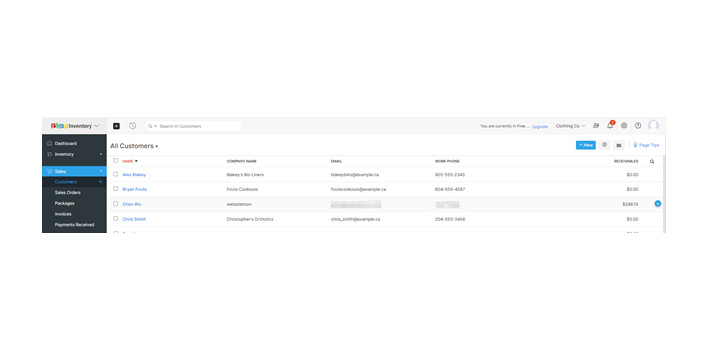Introduction
Product Information Management (PIM) Bigcommerce – Zoho Inventory integration is devoted to managing data synchronization between Zoho Inventory and Bigcommerce from four aspects, which are products, pricelists, contacts, stocks, and invoices (PPCSI). PIM Bigcommerce – Zoho inventory integration is a backend software which allows customers using Zoho inventory as a source data platform to control the products, price lists and stocks in Bigcommerce. The stocks are always dynamically changed based on Zoho inventory. Any sales orders created in Bigcommerce will automatically populate within Zoho inventory and generate invoices in Zoho inventory.
PPCSI
PPCSI is the abbreviation of products, price lists, contact, stocks, and invoices. PIM synchronization mainly focuses on PPSI synchronization.

Products
PIM fetches product information known as “Item” in Zoho inventory. Multiple fields will be fetched like product name, SKU, price, description, etc. The product information will be compared to the information in Bigcommerce, if it is already exists, PIM will update it. If the product does not exist, PIM will create a new product in Bigcommerce.

Price Lists
In Zoho inventory, organizations can create multiple price lists to assign items with different prices. PIM has functionality to fetch all price lists stored in Zoho inventory and push to Bigcommerce. By doing this, clients will be able to create different custom groups or roles and assign different price lists to different groups/roles. However, this functionality requires clients to have at least a Bigcommerce lite enterprise plan.

Contact
When customers place an order in Bigcommerce, PIM can get the sales order information and customer information. For the purpose of auto populating invoices, PIM also offers automation . The update or create option is based on whether the client’s email can be found in Zoho inventory.

Inventory/Stock
Besides the product information, PIM is also able to get the item and do the stock synchronization. To make sure the stock is synchronized successfully, PIM has three different stock synchronization methods, time scheduled synchronization, one-way real-time synchronization, and two-way real-time synchronization. Two-way synchronization is only available for clients using Zoho Inventory’s professional plan or above.

Transactional Data
To reduce the work involved with creating invoices, estimates, sales orders, and purchase orders manually on Zoho Inventory whenever a sales order is placed on Bigcommerce, PIM will automatically populate invoices from Bigcommerce to Zoho inventory.
Synchronization Methods
PIM Bigcommerce – Zoho inventory integration system offers two different ways to synchronize data between Zoho inventory and Bigcommerce based on your needs and the API limitations:

Time Scheduled Synchronization
Time scheduled synchronization aims to reduce the frequency of data updates and synchronization between Bigcommerce and Zoho inventory, as both Bigcommerce and Zoho inventory have daily API call limits based on the purchased plan. To avoid exceeding the API limits which would lead to update and synchronization failure, time scheduled synchronization can be set to sync either all or specific data at set intervals throughout the day (the time and frequency are customizable). For non critical data that does not require real-time performance, time scheduled synchronization is recommended. In addition, to avoid any data mismatch, time scheduled synchronization also can be used to check and complete a full synchronization once per day to maintain the data consistency. For all PPCSI synchronizations, PIM Bigcommerce – Zoho inventory integration system offers fully managed time scheduled synchronization.

Real-time Synchronization
Real-time synchronization focuses on improving the performance of data consistency for sensitive data like stock numbers. PIM Bigcommerce – Zoho inventory integration system also offers real-time synchronization for various fields. The fields will be monitored and once changed in Zoho inventory, PIM will be able to update them in a few seconds. By default, the sales orders created in Bigcommerce will be populated to Zoho invoice in real time. For other real-time synchronization, clients must have at least a professional plan in Zoho inventory.
DEMO
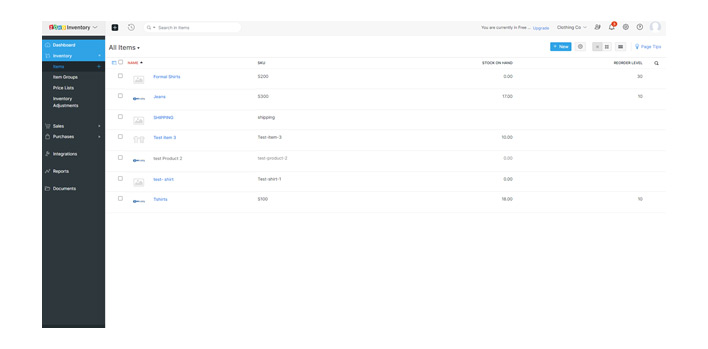
4.1 All Items in Zoho Inventory
Image 4.1 shows all test items in Zoho inventory. By default, PIM will only fetch active items (Image 4.2) instead of all Items. In the demo, “test product 2” is in both items list but it is an inactive item. Therefore, it will not be brought to Bigcommerce. Or if it was previously pushed to BigCommerce as an active item, PIM will change it to invisible in Bigcommerce once it is changed to inactive in Zoho inventory.
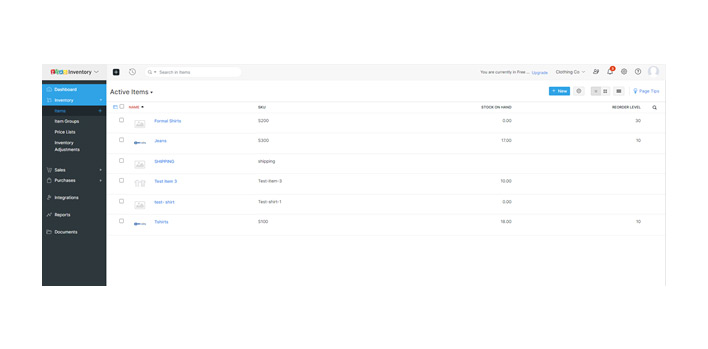
4.2 Active Items in Zoho Inventory
To distinguish “goods” and “services”, by default, PIM will also filter out items where its item type is “service”. As shown in Image 4.3, “SHIPPING” is a service item used for recording the shipping details when an invoice is created. Therefore, it will not be pushed into Bigcommerce.
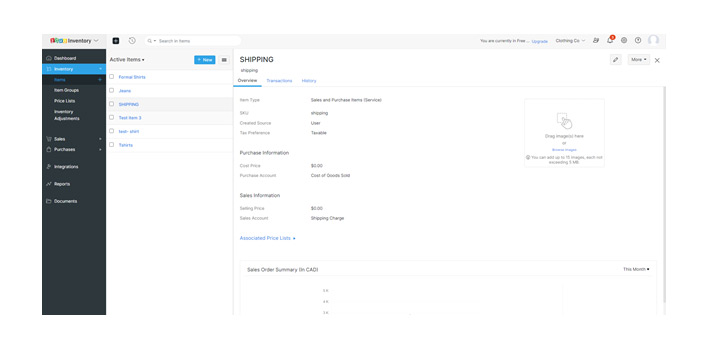
4.3 Service Item Example
Image 4.4 shows the demo Bigcommerce website’s backend. For items that are no longer listed in Zoho inventory, instead of deleting these items, PIM will change the status of these items to invisible. This way, you still can manage these items, but it will not be seen by customers unless reactivated.

4.4 All Items in Bigcommerce
Image 4.5 and Image 4.6 shows the multiple price lists in Zoho Inventory and Bigcommerce independently. All price lists in Zoho inventory will be synchronized into Bigcommerce with the same price list name. Like with the products, you can mark the price list as inactive in Zoho inventory, when that happens, PIM also will deactivate corresponding price list in Bigcommerce on next synchronization.
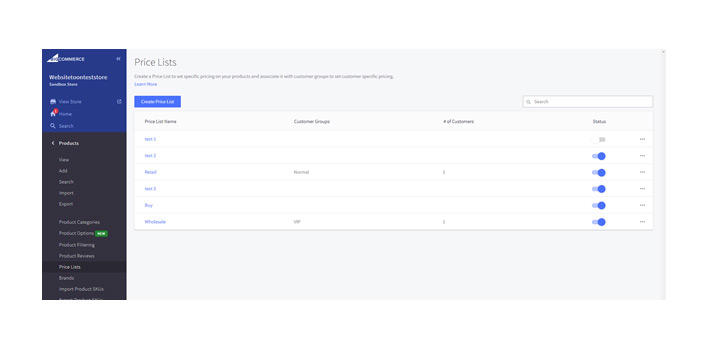
4.5 Price Lists in Zoho Inventory
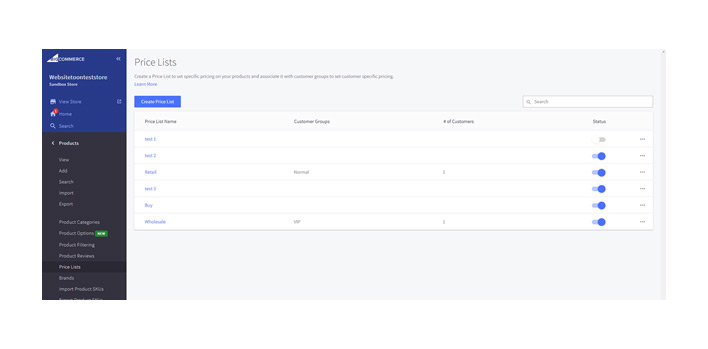
4.6 Price Lists in Bigcommerce

4.5 Price Lists in Zoho Inventory

4.6 Price Lists in Bigcommerce

4.7 Bigcommerce Sales Order
Image 4.7 shows the sales order placed in Bigcommerce, PIM can automatically fetch sales orders placed in Bigcommerce and will generate corresponding invoices in Zoho inventory. Image 4.8 shows the invoices in Zoho inventory. The customer information will be searched for in Zoho inventory. If it already exists, PIM will update it, otherwise, PIM will create a new contact in Zoho inventory. Image 4.9 shows the customers list in Zoho Inventory. Clients also can set payment terms in Zoho inventory for each customer. Once payment terms are set up, it will also automatically apply when the invoice is created.
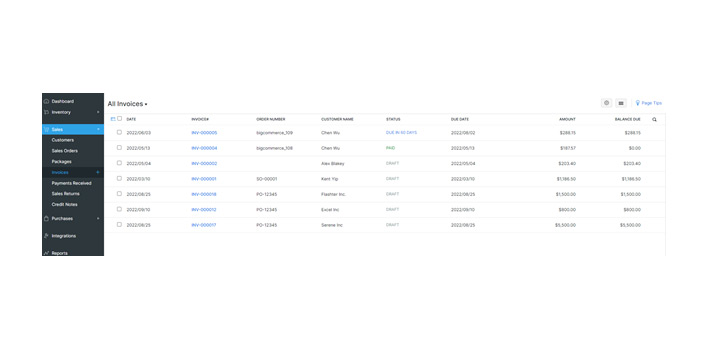
4.8 Zoho inventory Invoice
